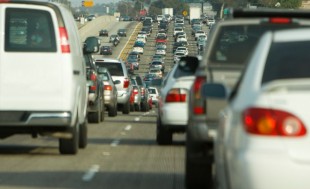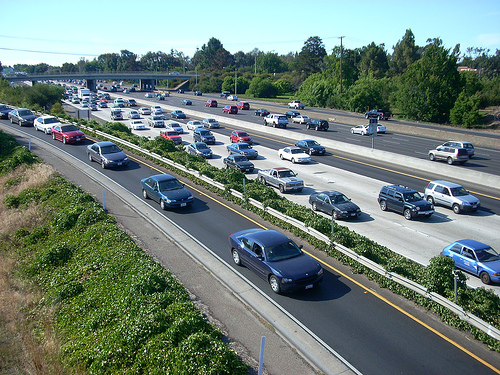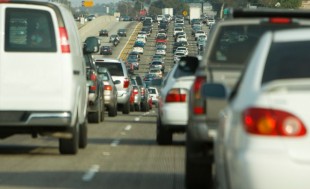 The federal government rolled out new auto fuel-efficiency standards today, capping more than a year of planning and, as the New York Times notes, a 30-year battle between regulators and automakers.
The federal government rolled out new auto fuel-efficiency standards today, capping more than a year of planning and, as the New York Times notes, a 30-year battle between regulators and automakers.
The new standards are a big deal—they’ll do more to cut the pollution of heat-trapping gasses than anything the Obama administration has done so far. But if it seems like you’ve heard about them before, you probably have—the regs got lots of press when they were first proposed last May. Thursday’s action puts that plan into effect, for 2012-2016 vehicles.
So I’m reposting our cheat sheet from last May, The scoop on Obama’s new fuel-economy rules. Here it is:
On May 19, President Barack Obama unveiled new standards to regulate fuel economy and greenhouse-gas emissions from cars and light trucks.
The bottom line: New automobiles will have to get better gas mileage
The numbers:
- Current standards: 27.5 miles per gallon for cars and 24 mpg for light trucks
- Starting in 2012, fuel efficiency will rise more than 5 percent each year
- New standards for 2016: 39 mpg for cars and 30 mpg for light trucks — an overall average of about 35.5 mpg
The environmental benefits:
- Will save 1.8 billion barrels of oil over the life of the program
- Will prevent 900 million metric tons of greenhouse-gas emissions
- Will be like taking 177 million of today’s cars off the road, or shutting down 194 coal-fired power plants
Fans of the plan:
- The major automakers, because they now have certainty and one clear set of regulations to follow
- The major environmental groups, because the federal government is actually doing something to reduce greenhouse-gas emissions
- California and 13 other states, because they have long wanted tougher auto emissions standards
Obama sings the plan’s praises:
In the past, an agreement such as this would have been considered impossible. That is why this announcement is so important, for it represents not only a change in policy in Washington, but the harbinger of a change in the way business is done in Washington. … And at a time of historic crisis in our auto industry, this rule provides the clear certainty that will allow these companies to plan for a future in which they are building the cars of the 21st century.
Find out more:
- Kate Sheppard reports that the new rules are the administration’s first real step to curb greenhouse-gas emissions.
- The Alliance of Automobile Manufacturers says it’s happy with the new rules.
- Michael Moynihan argues that fuel-economy rules are among the least precise tools for addressing climate change.
For some related big-picture pondering…
I’m glad to tell you why the bakery of transportation choices includes tastier options than stale auto dependency.
And Grist’s David Roberts considers what a post-auto American city might look like.



